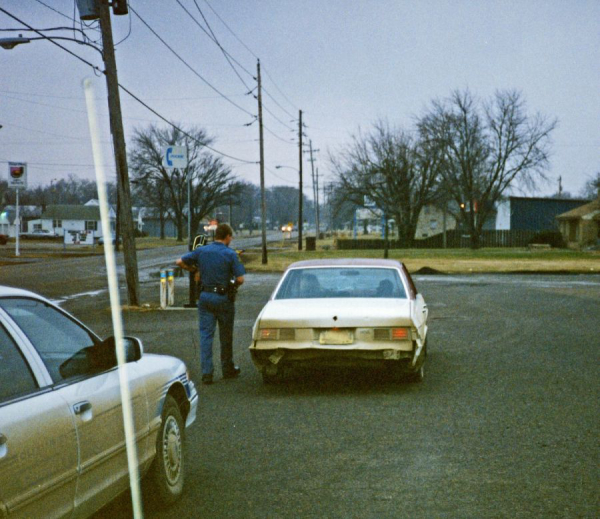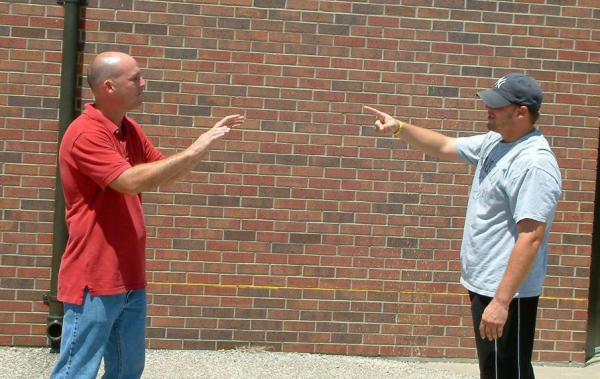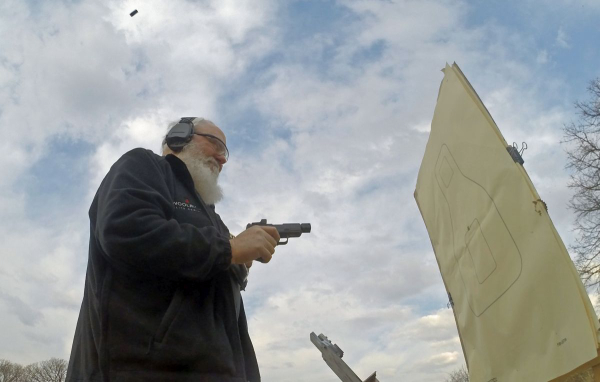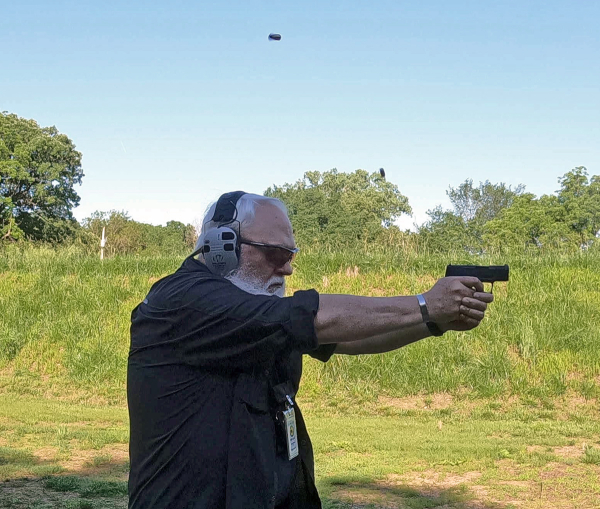Time and distance (along with the apparent size of the target) are an issue in our existence; size versus distance, and how time is related to the solution of the problem.
Time is relative. It’s a descriptive ‘handle’ we put on life, a measurement we make up based on our observable universe. It assists as we communicate, as we measure and analyze.
For the tactical problem, we seek a balance of time and distance; it’s part of rehearsal for that terrible eventuality. Practice regularly and you’ll find the mechanics have been internalized; you have more time to think and assess.
Distance gives you time and time gives you the opportunity to assess so you may not have to shoot at all.

What is time, tactically speaking? For Dennis Tueller, the experimenter that sealed up the “opportunity” factor in “ability-opportunity-jeopardy” as building blocks of threat assessment, says time is “distance and obstacles.” While he’s discussing contact weapon defense (not so much “remote control weapon” defense), it’s still applicable. A good many just fail to try perforation on the part of a target they can’t see.
And some hit the obstacle by accident.
For some understanding of the actual environmental dynamic of lethal force operationally, see Claude Werner’s excellent series on the LAPD Ochoa shooting on the Tactical Professor blog. Watching the videos show what the officer saw – or some facsimile thereof – and you get a sense of the cadence -- timing.
Many are revisiting the “killing at the Capitol” and, based on the rather embarrassing interview, wondering if it was an example of ‘area’ aiming?
Time versus distance? If you’re close, you still have to see enough to hit precisely enough.
How much is that?

We’ve been looking at close range benchmarks over the past few months and a real name in the industry, Bill Wilson, is stepping up with his own – an exercise he currently has under evaluation. The aim is clearly to balance speed with precision.
To recap our journey, a lot of the practice is at 10 feet – Mike Waidelich’s “never get closer (without a plan)” distance. I follow up with the Florida Department of Law Enforcement Qualification’s stage 2 -- as modified into reality: guard or contact ready (LAPD), two hits inside highest value area of target (not the whole silhouette) inside one second.
What about “follow through?” I do on the range; while I “admire my work through my sights” post-ignition, in my mind it’s move! A lot of what we have to do in practice is mental rehearsal. Assessment from behind cover or while we’re moving is preferred to standing still while gazing intently at the target.

This FDLE stage is reminiscent of Mark Fricke’s A.F.T.T. “Defensive 5-Shot Revolver Course” Stage Two, String 1. It called for a pair, center, from low ready at three yards. The time limit was one second. That’s moving right along for a light-weight five-shot 38 revolver at nine feet. That it’s not repeated – the Florida course has you do it twice – which could be due to the round count of Mark’s course of fire.
The Tactical Professor “high value” drill is explained thus: mostly shot on the “BTK” down-range drill target or on the target used for my “appropriated” close range benchmarks, it’s one hit in the ocular window within a second. We start hand on the gun in the holster. The idea is that we’ve been alerted to a problem, but it’s not time for “guns out” – due to others in the area, avoiding the “brandishing” types of laws, to prevent a gun grab attempt – it’s an alarm reaction. The drill calls for shooting, from 10 feet, a single hit to the high value area in one second. The process is repeated five times (to assure it’s “on demand.”)

Finally, Stage four of Hackathorn’s Wizard Drill: the one that nails me more than any other, it’s a pair from concealment into the 8-inch “-1” zone on the IDPA target from ten yards in 2.5 seconds. Why is it hard? Because it balances time versus the (visually apparent) size of the target; it’s easy to let the “-0” make you take the extra time to hit. The hits aren’t hard, the time isn’t tough, but putting them together into the mix puts me over by .1-.2 pretty consistently with good guns and good sights. With tiny, hard to handle guns that have small sights, I tend to eke out the pair in 2.46-2.49 pretty consistently.
Maybe it’s that I try harder with the micros …
Finally, the old Arizona DPS Daytime qualification as modified by Prescott PD, had the following fifteen-yard stage: 15 yards, 1 hit, in 2.0 seconds, from ready – executed twice. I work to get that down to reasonable (-0) hits in closer to one second than two – but two is a great place to start.
Consider this: regardless of how fast you can accurately shoot on the range, the best solution is never having to shoot at all. Approach tactics, anticipating danger and finding and using cover are all profoundly important. Subject control by taking tactical advantage and leaving them no choice – the “offer he can’t refuse” – is also part of the job.
Be able, be ready and work like hell to avoid having to put that practice to use.
-- Rich Grassi